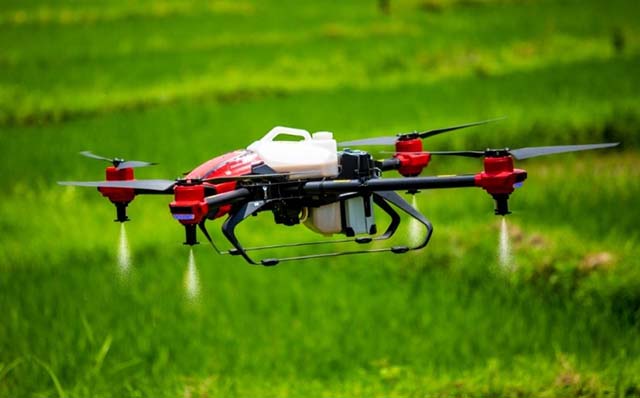
Drone-Based Larviciding Shows Promise in Malaria Prevention in Rwanda
Drone-based larviciding has emerged as a promising tool in the fight against malaria in Rwanda, with the Rwanda Biomedical Center (RBC) reporting a reduction in malaria cases in 2020.
Phocas Mazimpaka, an official in charge of malaria prevention through Integrated Vector Management (IVM) at the RBC, highlighted the impact of this initiative, stating, “This initiative complements a set of existing strategies to prevent and combat malaria in the country.”
“Drone-based larviciding has revolutionized our approach to malaria prevention. Not only has it significantly reduced malaria cases in 2020, but it has also bolstered our ability to tackle this disease comprehensively.”
Mazimpaka highlighted that the drones’ ability to cover vast areas and target mosquito breeding sites like swamps and stagnant water bodies has been instrumental.
“This initiative not only directly addresses mosquito larvae, which are the source of malaria transmission, but also minimizes environmental impact and reduces the risk of human exposure to insecticides. This is a game-changer in our fight against malaria.”

The initiative involves the use of drones equipped with 10-litre tanks carrying insecticide. These drones follow pre-mapped routes and spray over vast mosquito breeding sites, such as swamps and stagnant water bodies, targeting mosquito larvae.
According to the Ministry of Health, this approach “will greatly contribute to achieving zero malaria in Rwanda.”
Malaria has been a significant public health concern in Rwanda, with a notable increase in cases between 2012 and 2016. Simple malaria cases rose from about a million to 4.5 million during this period, while severe malaria cases increased from 9,000 to 17,000.
However, preliminary data from the RBC indicates that total malaria cases dropped to below 4 million by the end of 2018, suggesting that the efforts to combat the disease are yielding positive results.
The use of drones in larviciding offers several advantages. Drones can cover vast areas more efficiently and quickly than traditional methods, making them ideal for targeting mosquito breeding sites in remote or hard-to-reach areas.
Additionally, drone-based larviciding is environmentally friendly, as it minimizes the need for ground-based spraying and reduces the risk of exposing humans to insecticides.
As Rwanda continues its efforts to eliminate malaria, the use of drones in larviciding represents a innovative approach that could play a key role in achieving this goal.

